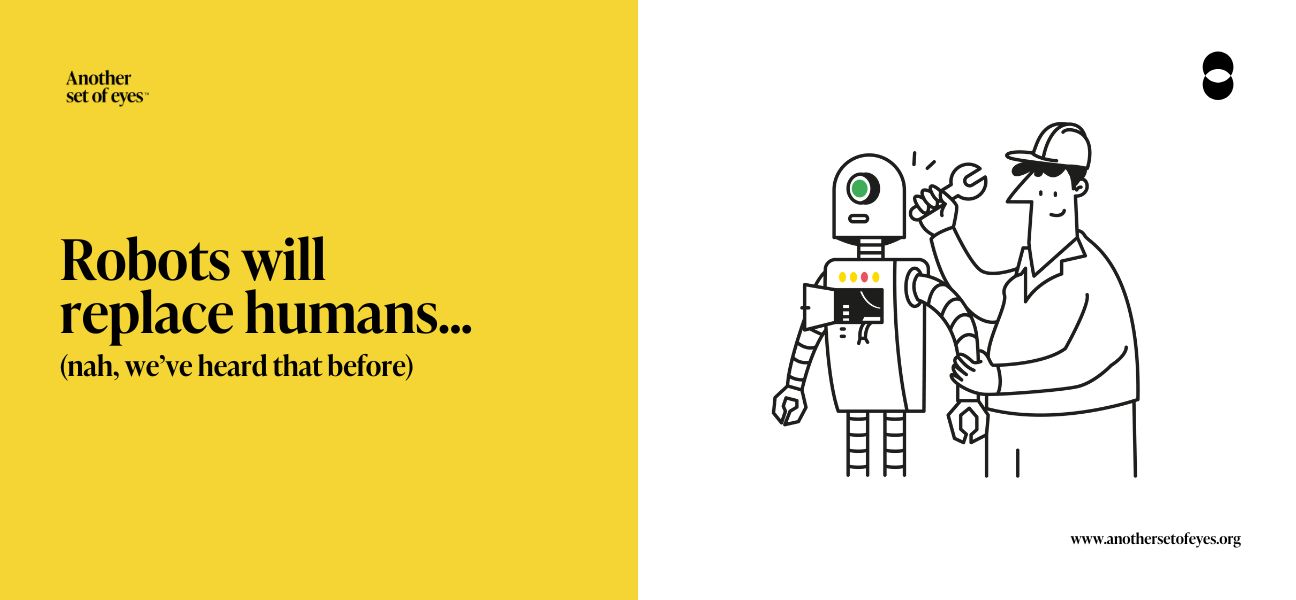
It’s not about how many robots you have. It’s about how you use human intelligence.
I recently came across insights from Russell Watkins, a lean manufacturing expert, that made me rethink something fundamental about modern production. Through our work with Johannes Kepler University in Linz, I’ve spent time in manufacturing environments - and a pattern keeps emerging that challenges conventional wisdom.
It’s not about how many robots you have. It’s about how you use human intelligence.
In 2018, Elon Musk admitted (you believe it or not ) something remarkable: “Yes, excessive automation at Tesla was a mistake. To be precise, my mistake. Humans are underrated.” Tesla had built a complex network of conveyor belts for Model 3 production, betting that robots would solve their manufacturing challenges. It didn’t work. They had to tear out the automated systems and bring humans back to the process.
This is what I call the “automation trap.” Companies often equate automation with efficiency, assuming machines will outperform humans in all tasks. But that assumption misses something fundamental: machines execute instructions—they do not innovate, adapt, or improve themselves. Toyota, on the other hand, never fell into this trap. Despite being one of the most consistently profitable carmakers for over five decades, Toyota has deliberately kept humans at the center of assembly and process work.
When you picture a modern car factory, robots dominate the image. And yes, Toyota uses automation - welding, painting, lifting heavy components- but when it comes to assembly and process improvement, humans remain indispensable. Internal studies at Toyota compared humans and machines performing the same assembly tasks. The result?
Humans consistently completed tasks faster, made fewer errors, and - critically - continuously suggested improvements.
A robot will follow instructions perfectly. But it won’t notice that the third bolt is slightly harder to reach, or that the alignment of a part creates unnecessary strain for the next step. It won’t spot patterns, like defects increasing after lunch breaks due to subtle temperature changes. It won’t suggest rotating a workstation 15 degrees to reduce back strain. Workers do. Every single day.
This is Kaizen - continuous improvement - not as a poster on the wall, but as a living practice. Toyota even empowers any worker to stop the production line through the Andon Cord system if they spot a problem. Human judgment trumps throughput metrics.
The true edge isn’t just having skilled workers - it’s what they know.
This knowledge exists in every factory, walking around, having coffee, or training a new hire. When people retire, get promoted, or leave, it walks out the door with them. Companies spend millions on automation to scale production. Yet the most valuable thing to scale isn’t repetitive motion—it’s expertise, pattern recognition, and problem-solving capability.
Fortune 500 companies lose roughly $31.5 billion a year due to knowledge gaps, according to the International Data Corporation. A company with 1,000 employees can expect to lose $2.4 million annually in productivity simply because employees aren’t aware of what their colleagues have already solved - not due to turnover, but daily inefficiency.
Toyota maintains its advantage because it doesn’t just rely on skilled workers. It actively captures, refines, and spreads that knowledge. Every improvement suggestion, every problem solved, every insight about what actually works on the factory floor is preserved and leveraged. Most companies don’t have this. They rely on tribal knowledge, documents no one reads, or training that’s “watch and learn.” Institutional memory evaporates with every departure, leaving gaps that cost money and slow innovation.
Through our work with manufacturing companies, I’ve observed firsthand how experienced workers spot patterns and solve problems that automation cannot replicate. For example, during a line observation, a veteran worker noticed a recurring misalignment in a component caused by slight temperature changes in the morning. Machines never flagged the issue, but the worker immediately suggested a minor adjustment that prevented defects. This small human insight saved hours of rework—and it wouldn’t have been captured without the right system to record and propagate it.
Similarly, the assembler who has performed a motion 10,000 times knows intuitively how to reduce fatigue without sacrificing precision. Machines can replicate motion endlessly, but they can’t refine it on the fly. The knowledge problem isn’t just about mistakes - it’s about missed opportunity. Every small insight that isn’t captured is potential efficiency, quality, and innovation lost.
The question isn’t, “How do we automate this job?” It’s:
“How do we capture what people know, organise it, and turn it into learning experiences that actually work?”
Companies that understand this build systems that:
Toyota figured this out decades ago. It isn’t about replacing people with robots - it’s about making the best human intelligence scaleable.
The lesson extends beyond car factories. Any operation—software, logistics, healthcare—relies on people solving problems and refining processes. Automation can support them, but it cannot replace their insight. For businesses today, the real competitive advantage lies in capturing human expertise, not just increasing throughput. Those who fail to do this risk falling into the same automation trap that Tesla nearly did Experienced workers already see patterns, solve problems, and refine processes every day. The question is whether your organization is capturing it and making it accessible to everyone who needs it.
Toyota’s edge is simple yet profound: they don’t just build cars - they build learning organisations, where human judgment drives continuous improvement.
The rest of us are still learning.